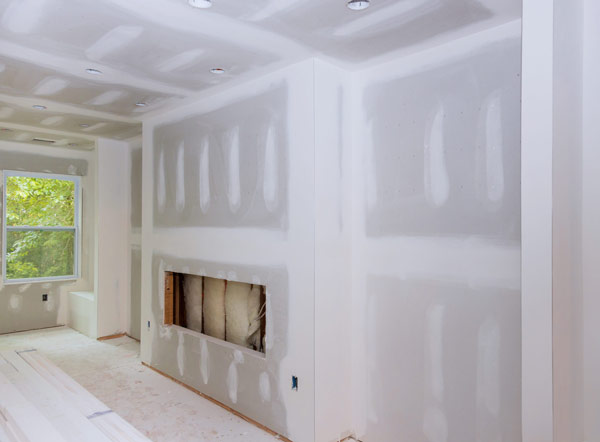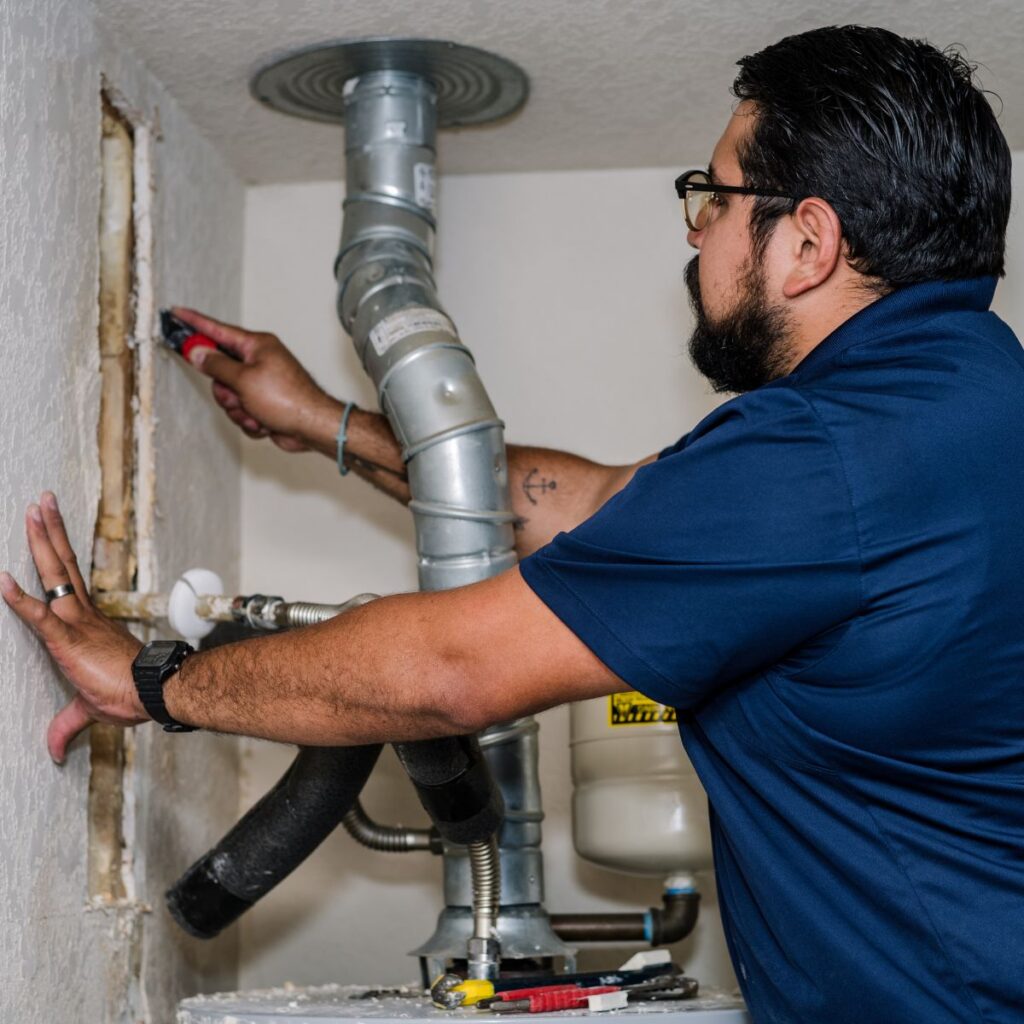Learn about stunning makeovers done with Drywall Repair Ogden UT and innovative painting work.
Necessary Tips for Effective Drywall Fixing and Installation Methods
Efficient drywall fixing and installation needs a careful method. Comprehending the kinds of drywall and having the right devices is crucial. Appropriate methods and precise dimensions can considerably influence the outcome. Several neglect important steps like taping and sanding, which can make or damage the last appearance. As jobs progress, typical obstacles might develop that call for interest. Checking out these ideas can lead to a more refined and successful surface.
Comprehending Different Sorts Of Drywall
Understanding the various sorts of drywall is necessary for any effective fixing or installment job. Drywall, generally referred to as plaster board, comes in a number of selections customized for particular applications. Criterion drywall is one of the most commonly utilized type, perfect for basic indoor wall surfaces and ceilings. Moisture-resistant drywall, often green in shade, is created for areas vulnerable to humidity, such as cooking areas and restrooms. Fire-resistant drywall, usually colored pink or purple, is engineered to hold up against greater temperature levels and is usually made use of in garages or near heaters. In addition, soundproof drywall helps in reducing sound transmission, making it ideal for multi-family homes or videotaping studios. Specialty drywall, like concrete board, is used in wet locations like showers or tub borders. Recognizing these types aids in picking the right material for each job, ensuring resilience and performance out of commission or brand-new installations.
Necessary Tools for Drywall Repair Service and Installation
Having the right tools is vital for reliable drywall fixing and installment. A top quality utility knife is critical for reducing drywall sheets specifically. A drywall T-square assists assure straight edges, while a taping knife is required for using joint compound smoothly over joints. Furthermore, a drywall saw enables for removing harmed areas or fitting drywall around fixtures.
For hanging drywall, a power drill with drywall screws is crucial, as it enables safe and secure and quick installation. A degree is likewise vital to verify that the drywall is straight and appropriately straightened. A fining sand block or pole sander is vital for raveling joint substance once it has dried out. A measuring tape is vital for exact measurements, protecting against waste and ensuring an appropriate fit. Equipped with these devices, people can deal with drywall jobs successfully, bring about professional-looking outcomes.
Step-by-Step Overview to Fixing Holes and Cracks
When resolving holes and splits in drywall, having the right devices and products is important for an effective fixing. This overview outlines the needed products and gives a clear, step-by-step process to efficiently restore the surface. Comprehending these elements will certainly aid guarantee a smooth coating and durable results.
Tools and Materials Needed
A well-appointed toolkit is crucial for effective drywall repair service and installation. Key tools consist of an utility blade for reducing drywall, a tape action to assure exact sizing, and a drywall saw for larger openings. A putty blade is essential for using joint substance smoothly, while a fining sand block or pole sander helps attain a smooth finish. For patching, a roll of fiberglass fit together tape or paper tape is required to enhance joints. In addition, a drill and screws are required for protecting new drywall pieces. Essential materials include joint compound, primer, and paint to finish the repair service. Having these devices and products accessible ensures a smoother, more effective repair process, generating professional-looking outcomes.
Repair Refine Actions
Repairing holes and cracks in drywall needs a systematic method to guarantee a smooth coating. The area surrounding the damages needs to be cleaned up thoroughly to remove dirt and particles. Next off, for little fractures, a putty knife is made use of to apply a joint substance uniformly over the area. For larger openings, a patch is needed; the damaged section is removed, and a brand-new item of drywall is fitted in place, safeguarded with screws. Once the spot is in placement, joint compound is related to mix the sides. After drying, fining sand the location smooth is essential. The repaired surface ought to be primed and painted to match the surrounding wall, making certain an unnoticeable repair.
Strategies for Setting Up Drywall Panels
Setting up drywall panels needs mindful preparation and accurate execution to ensure a professional and smooth coating. It is vital to determine the wall surface space precisely and cut the panels to fit, ensuring that they line up with the studs. Positioning the panels flat is typically click this link suggested, as this can improve the structural stability and minimize the variety of joints.
Making use of drywall screws, installers should secure the panels every 16 inches along the studs, guaranteeing a firm hold. It is crucial to avoid overdriving the screws, which can damage the paper surface. For corners and sides, making use of an energy blade enables for clean cuts and a snug fit.

Completing Touches: Insulation, Mudding, and Fining sand
Once the drywall panels are safely in area, the next important step involves the complements of taping, mudding, and sanding. Taping is important for producing a seamless change in between panels and hiding joints. A top quality drywall tape, either paper or fiberglass fit together, need to be applied over the joints, ensuring it adheres properly to the mud that will certainly be applied next.
Mudding, or applying joint substance, complies with the taping process. This substance loads voids and ravel the surface. An initial layer must be applied kindly, feathering the sides to blend with the drywall. After the initial layer dries out, succeeding layers may be needed for a perfect coating.
Ultimately, sanding is required to attain a smooth surface area. A fine-grit sandpaper must be used to gently smooth out any kind of imperfections. Care should be required to stay clear of over-sanding, which can damage the drywall - Drywall Repair Ogden UT. Correctly executed, these finishing touches create a professional appearance ready for painting
Tips for Preserving Your Drywall After Installation
Maintaining drywall after installation is important to maintaining its appearance and structural integrity. Normal cleaning is required; dirt and dirt can gather, so gentle cleaning with a wet towel is recommended. Home owners need to likewise evaluate for any kind of indications of dampness or mold and mildew, specifically in high-humidity locations like shower rooms and kitchens. If any type of damage occurs, it is very important to resolve it immediately to stop further issues.
Using furnishings pads can aid stop scratches or damages from hefty items. Furthermore, painting the drywall with a top quality, cleanable paint gives an extra layer of defense and makes future cleansing less complicated. Prevent using rough cleansers or tools, as these can harm the surface. Preserving a secure indoor climate with ideal humidity levels will help avoid breaking or check this site out buckling over time. By complying with these suggestions, one can assure that drywall remains in superb problem for many years to find.
Often Asked Concerns
Just How Long Does Drywall Take to Fully Dry After Installation?

Can I Mount Drywall Over Existing Drywall?
Yes, drywall can be installed over existing drywall, but it is necessary to ensure the underlying surface is safe and adequately prepared. This method can enhance insulation and minimize installation time, though it might include weight.
What Is the very best Means to Soundproof Drywall?
The most effective means to soundproof drywall involves utilizing specialized soundproofing materials, such as resilient networks, acoustic caulk, and sound-dampening drywall. These strategies effectively minimize audio transmission between spaces, enhancing general acoustic performance in living areas.
Just how Do I Choose the Right Drywall Density?
To pick the right drywall thickness, take into consideration the application and place. Criterion household wall surfaces normally use 1/2 inch, while ceilings or specialized areas may require 5/8 inch for added toughness and soundproofing abilities.
Are There Eco-Friendly Drywall Options Available?
Yes, environmentally friendly drywall alternatives are readily available. These consist of items made from recycled products, gypsum boards with low unstable organic compounds (VOCs), and those using sustainable production processes, offering environmentally-conscious options for building and improvement tasks.
Having the right tools is vital for reliable drywall repair and installment. For hanging drywall, a power drill with drywall screws is crucial, as it allows protected and quick installation. Key devices include an utility knife for cutting drywall, a tape step to assure accurate sizing, and a drywall saw for larger openings. Yes, drywall can be installed over existing drywall, yet it is crucial to assure the underlying surface area is safe and adequately prepared. The best method to soundproof drywall entails using specialized soundproofing materials, such as durable channels, acoustic caulk, and sound-dampening drywall.